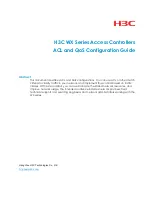
181
FORM 160.54-M1
ISSUE DATE: 10/25/2019
JOHNSON CONTROLS
JCI COMPANY CONFIDENTIAL
21
SECTION 21 - TEMPERATURE THERMISTORS
System temperatures are sensed by thermistors. There
are two different thermistor types used to sense the vari-
ous system temperatures. Each type has its own YORK
part number. Part numbers are listed in
YORK Renewal
Parts List (Form 160.54-RP2)
or the unit renewal parts
manual. The Return and Leaving Chilled Liquid, Re-
turn and Leaving Condenser Liquid, Drop Leg Refrig-
erant and Evaporator Temperatures are sensed by 3K
Ohm thermistors. The Oil and Compressor Discharge
temperatures are sensed by 50K Ohm thermistors.
The 3K Ohm thermistors are defined by the character-
istic of being 3000 Ohms at 77°F (25°C). Similarly,
the 50K Ohm thermistors are 50,000 Ohms at the same
temperature. Both thermistor types vary their resis-
tance as the sensed temperature varies. Both are nega-
tive temperature coefficient devices. That is, as the
temperature increases, the resistance decreases. As the
temperature decreases, the resistance increases.
The thermistors are connected to the microboard. A
+5 VDC supply voltage is applied to one side of the
thermistor. The other side of the thermistor is con-
nected to ground through a series resistor on the mi-
croboard, thus forming a voltage divider network. The
temperature applied to the thermistor determines the
resistance value. The resistance value determines the
amount of current that will flow through the thermistor
and thus the voltage drop across it. The Program reads
this voltage at the input to the microboard and converts
it to a temperature value.
Each thermistor is connected to the microboard with
two wires. One wire supplies the +5 VDC voltage and
the other is the output of the thermistor. This output
voltage can be measured with a Voltmeter. Measure-
ment should be made from the thermistor output to
ground (GND). For example, the Leaving Chilled Liq-
uid Temperature would be read from Microboard J9-
20 (output) to Microboard TP1 (GND). To convert this
voltage to a pressure, see the appropriate volts/temper-
ature tables as follows:
• Leaving Chilled Liquid Temperature –
Table 12
• Leaving Chilled Liquid Temperature (Heat Pump
applications) –
Table 13
• Return Chilled Liquid Temperature –
Table 14
• Return Chilled Liquid Temperature (Heat Pump
Applications) –
Table 15
• Return and Leaving Condensing Water –
Table 16
• Oil and Discharge Temperature –
Table 17
• Drop Leg Refrigerant Sensor –
Table 18
• Evaporator Refrigerant Sensor –
Table 19
• Leaving and Return Heating Condenser Water
Temperature Sensor –
Table 20
If any of the displayed pressures do not appear to
be correct, see
of this manual.
















































